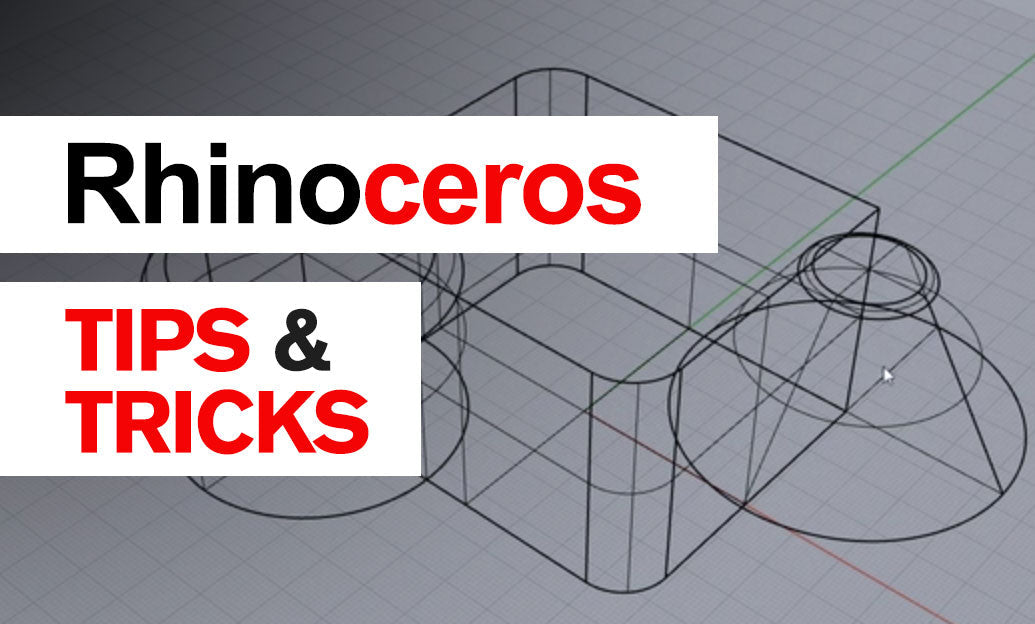Your Cart is Empty
Customer Testimonials
-
"Great customer service. The folks at Novedge were super helpful in navigating a somewhat complicated order including software upgrades and serial numbers in various stages of inactivity. They were friendly and helpful throughout the process.."
Ruben Ruckmark
"Quick & very helpful. We have been using Novedge for years and are very happy with their quick service when we need to make a purchase and excellent support resolving any issues."
Will Woodson
"Scott is the best. He reminds me about subscriptions dates, guides me in the correct direction for updates. He always responds promptly to me. He is literally the reason I continue to work with Novedge and will do so in the future."
Edward Mchugh
"Calvin Lok is “the man”. After my purchase of Sketchup 2021, he called me and provided step-by-step instructions to ease me through difficulties I was having with the setup of my new software."
Mike Borzage
Rhino 3D Tip: Efficiently Converting Surfaces to High-Quality Meshes in Rhino 3D
April 20, 2025 2 min read

Converting surfaces to meshes in Rhino 3D is a fundamental task for designers who need to prepare their models for rendering, analysis, or export to other software platforms. Understanding the nuances of this process ensures that the integrity of your model is maintained throughout your workflow.
Here’s how you can efficiently convert surfaces to meshes in Rhino:
Steps to Convert Surfaces to Meshes
- Select the Surfaces: Begin by selecting the surface or polysurface you wish to convert.
-
Use the Mesh Command: Type
Meshinto the command line and press Enter. This command initiates the conversion process. -
Adjust Mesh Settings: The Mesh Options dialog box will appear. Here, you can control the density and quality of the mesh:
- Jagged & Faster: Generates a mesh quickly with fewer polygons.
- Smooth & Slower: Creates a higher-quality mesh with more polygons.
- Custom Settings: For precise control, choose Custom and adjust parameters like Maximum Angle, Maximum Aspect Ratio, and Minimum Edge Length.
- Preview the Mesh: Before finalizing, click on Preview to see how the mesh will look. This step helps you adjust settings if the mesh is too dense or not detailed enough.
- Apply and Confirm: Once satisfied with the settings, click OK to generate the mesh.
Considerations for Optimal Mesh Conversion
- Purpose of the Mesh: Determine whether the mesh is for rendering, fabrication, or export. This will influence your settings.
- Balance Between Quality and Performance: Higher mesh density improves detail but can slow down your system and increase file size.
- Check for Errors: After conversion, inspect the mesh for any anomalies or defects using Rhino's mesh analysis tools.
-
Optimize the Mesh: Use commands like
ReduceMeshorRebuildMeshNormalsto improve performance without significantly compromising quality.
Tips for Efficient Workflow
- Save Original Surfaces: Always keep a copy of the original surfaces in case you need to adjust or reconvert them.
- Use Layers: Organize your meshes and surfaces on different layers to easily toggle visibility and manage your model.
- Automate with Scripts: For repetitive tasks, consider using RhinoScript or Grasshopper to automate the conversion process.
For more advanced techniques and tools, explore resources provided by NOVEDGE, a leading online store for design software.
Why Convert Surfaces to Meshes?
Meshes are essential for various downstream applications:
- Rendering: Most rendering engines require mesh inputs for visualization.
- 3D Printing: Meshes are used to create STL files for additive manufacturing.
- Animation and Simulation: Mesh models are often needed for animation software and finite element analysis.
- Compatibility: Exporting models to other platforms that do not support NURBS surfaces.
Understanding how to control the mesh conversion process in Rhino enables you to produce high-quality models suitable for any application.
Visit NOVEDGE for the latest updates, tools, and expert advice on Rhino 3D to enhance your design workflow.
You can find all the Rhino products on the NOVEDGE web site at this page.
Also in Design News

Revolutionizing Design Software Interfaces with Natural Language Processing Integration
May 02, 2025 8 min read
Read MoreSubscribe
Sign up to get the latest on sales, new releases and more …




